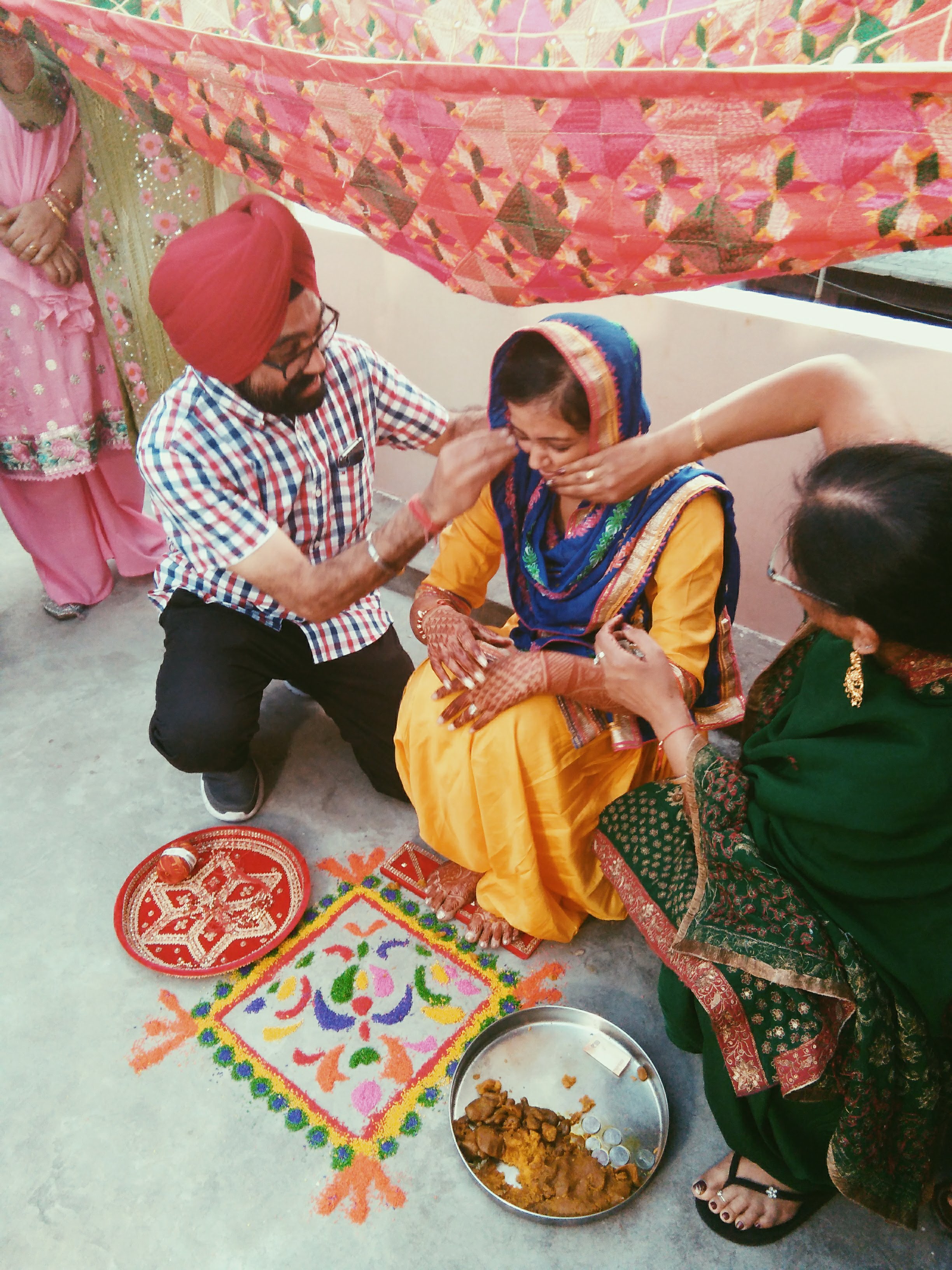Haldi (ceremony) on:
[Wikipedia]
[Google]
[Amazon]
 Mayian, also known as Vatna Maiyun, Haldi, or Ubtan, is the term used for the preparation ceremony one day before Punjabi weddings of
Mayian, also known as Vatna Maiyun, Haldi, or Ubtan, is the term used for the preparation ceremony one day before Punjabi weddings of
 Mayian, also known as Vatna Maiyun, Haldi, or Ubtan, is the term used for the preparation ceremony one day before Punjabi weddings of
Mayian, also known as Vatna Maiyun, Haldi, or Ubtan, is the term used for the preparation ceremony one day before Punjabi weddings of India
India, officially the Republic of India, is a country in South Asia. It is the List of countries and dependencies by area, seventh-largest country by area; the List of countries by population (United Nations), most populous country since ...
and Pakistan
Pakistan, officially the Islamic Republic of Pakistan, is a country in South Asia. It is the List of countries and dependencies by population, fifth-most populous country, with a population of over 241.5 million, having the Islam by country# ...
. This ceremony is usually done in morning but sometimes done in late afternoon or early evening and after this ceremony bride/ groom take a shower and get ready for wedding.{{Cite news , last=Sahota , first=Simerjeet , date=2013-03-31 , title=Wedding Season: Wedding Wear , url=http://www.browngirlmagazine.com/2013/03/wedding-season-wedding-wear/ , url-status=dead , archive-url=https://web.archive.org/web/20171107014121/https://browngirlmagazine.com/2013/03/wedding-season-wedding-wear/ , archive-date=7 November 2017 , access-date=2017-11-06 , work=Brown Girl Magazine The Ceremony usually takes place at the couple's parental homes. It consists of many rites, including the ''Batna'', ''Choora
''Chura'' (in Hindi-Urdu), ''chuda'', or ''chudlo'' (in Gujarati) is a set of bangles traditionally worn by a bride on her wedding day and for a period after, especially in Indian weddings.
Materials and appearance
The ''chura'' is usually red ...
'', ''Jaggo'', fireworks and sometimes the ladies '' Sangeet'' and ''mehndi
Mehndi () is a form of temporary skin decoration using a paste created with henna. In the West, mehndi is commonly known as henna tattoo, although it is not a permanent tattoo.
Mehndi is a popular form of body art in South Asia and resembl ...
''. In South Indian weddings a similar ceremony takes place called the "Pithi" ceremony.
Ceremony
One day before the wedding, the ceremony of mayian is performed at the couple's respective homes. The prospective bride or groom is seated on a wooden plank called a ''patri'', and a red cloth is held above by four female relatives, while married women of the household and '' biradari'', led by the mother, rub a paste of turmeric, flour andmustard oil
Mustard oil can mean either the pressed oil used for cooking or a pungent essential oil, also known as volatile oil, of the mustard plant. The essential oil results from grinding mustard seed, mixing the grounds with water, and isolating the resu ...
on his or her face, arms and legs. During the ritual women sing traditional songs and those of the biradari receive the ritual gift of ''gogley'' (Punjabi sweets specially cooked for weddings) at the end of the ceremony.
Choora
On the morning before the wedding, a ritual of ''choora'' or ''chura'' is performed at the bride-to-be's residence, involving a set of ivory and red bangles. Her maternal uncle makes a gift of clothes, jewellery and some cash called ''nankey-shak''. He puts the bangles on his niece while the women sing traditional songs depicting the role of maternal uncles. Before the wedding ceremony, the bride-to-be takes a ritual bath and dresses in the clothes in which she will be wed, provided by her maternal uncles. Similarly, the bridegroom-to-be also receives a set of clothes called ''sherwani
A sherwani is a long-sleeved outer coat worn by men in South Asia. Like the Western frock coat, it is fitted, with some waist suppression; it falls to below the knees and is buttoned down the front. It can be collarless, have a shirt-style col ...
'' from his maternal uncles which he, too, wears at the wedding ceremony. It signifies the importance of the role of the mother's natal family at the wedding rituals, and reinforces the alliance established at the mother's own wedding.
Batna/ Vatna
In the ''Batna/ Vatna'' rite, the couple's families rub yellowturmeric
Turmeric (), or ''Curcuma longa'' (), is a flowering plant in the ginger family Zingiberaceae. It is a perennial, rhizomatous, herbaceous plant native to the Indian subcontinent and Southeast Asia that requires temperatures between and high ...
paste upon their legs, face, and arms while sitting on a ''patri'' (a special red board with embroidery) below a red cloth held by four women. This is done to cleanse and balance the body for married life.
Jaggo
In the ''Jaggo'' ceremony, the family dances and sings on the road in front and around the beautifully decorated wedding home. Jaggo is held in the last hours of the night. Copper vessels called "gaffers" are decorated with divas (clay lamps), filled withmustard oil
Mustard oil can mean either the pressed oil used for cooking or a pungent essential oil, also known as volatile oil, of the mustard plant. The essential oil results from grinding mustard seed, mixing the grounds with water, and isolating the resu ...
, and lit. The bride/bridegroom's maternal aunt (''mammi'') carries it on her head, and another lady carries a long stick with bells, which she shakes. The ladies then go into other friends' and families' homes to be welcomed with sweets and drinks. They dance there and move on. It is a solemn ceremony filled with joy, dancing, fireworks, and food. The Ladies ''Sangeet'' (Ladies' Night of Singing) and ''mehndi
Mehndi () is a form of temporary skin decoration using a paste created with henna. In the West, mehndi is commonly known as henna tattoo, although it is not a permanent tattoo.
Mehndi is a popular form of body art in South Asia and resembl ...
'' might follow the ''mayian'' and dinner.
References